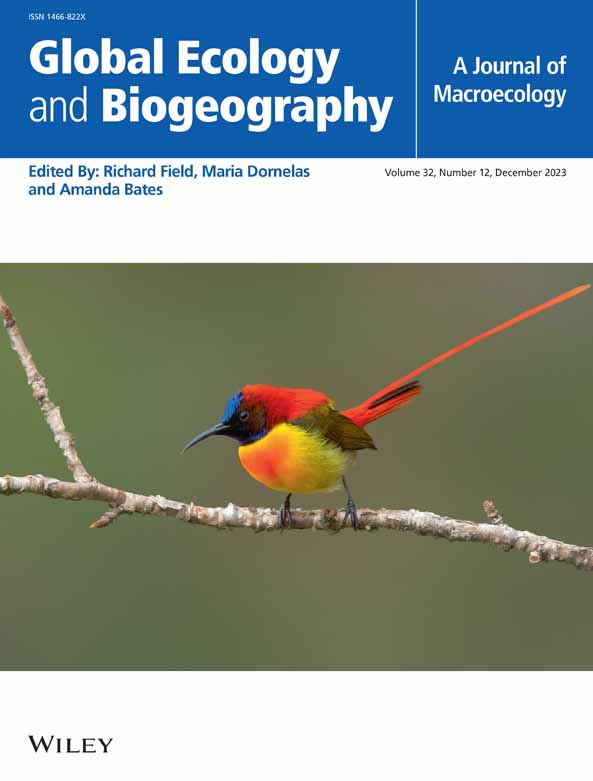Climate Underlies Variation in Plant Disease Severity by Altering Grassland Plant Communities
Abstract
Aim
Understanding the distribution of foliar fungal diseases is crucial to predicting their impact on ecosystems and their future spread. However, the relative importance of abiotic and biotic factors in determining variation in pathogens between plant communities remains controversial. Here, we tested four hypotheses: warmer, wetter climates, higher soil fertility and dominance by fast-growing plants should increase foliar pathogens, while higher plant diversity should decrease disease. We explored how those factors influence community pathogen load through changes in plant species composition and intraspecific changes in infection. Finally, we projected future distributions of community pathogen load.
Location
China's main grassland.
Time Period
2021–2022.
Major Taxa Studied
Plants and foliar pathogens.
Methods
We assessed the direct and indirect effects of abiotic (climate and soil fertility) and biotic factors (community composition, species richness and plant traits) on community pathogen load and its two components by Bayesian mixed-effects and structural equation models. We employed a space-for-time substitution approach to predict disease severity under future scenarios.
Results
We found lower disease severity with higher temperatures and lower precipitation. Both temperature and precipitation indirectly influenced community pathogen load through changing species richness, plant traits and soil fertility. However, both temperature and precipitation increased the expected community pathogen load due to plant compositional change (taxa that were taller and had larger leaves) without affecting community pathogen load caused by intraspecific variation. Finally, we found that current disease pressure is highest in the northeastern and southwestern provinces. Future projections suggest fungal pathogen pressure in the Greater Khingan Range, Qinghai-Tibetan Plateau and central-western Inner Mongolia Plateau will increase.
Main Conclusions
Climate underlies variation in foliar fungal diseases by altering plant communities. Our findings highlight the importance of integrating climate and plant community change into disease prediction models, with particular attention to water-sensitive plant diseases such as foliar fungal pathogens.

 求助内容:
求助内容: 应助结果提醒方式:
应助结果提醒方式:


